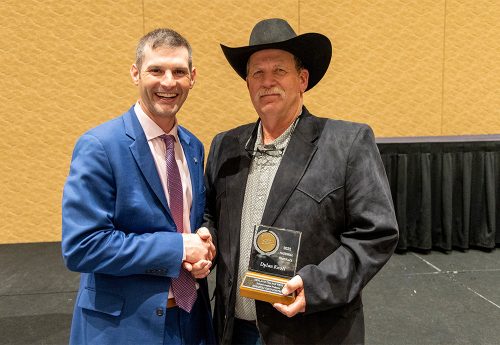
DRYLAND-TILLAGE EASTERN CATEGORY
First Place: Allen Walters, Walters Farms
Clark County, Illinois
Variety: Dekalb DKS38-16
Yield: 184.21 bpa
Allen Walters farms in Clark County, Illinois, along the I-70 line between St. Louis and Indianapolis. His 2022 growing season started off with a full moisture profile and conditions that delayed planting. He finally found a window to plant in June, then it all changed. “When it got dry, it got really dry. We had a couple tenths here and there. It’s kind of interesting to see milo here in a different climate and what it can do just with how much it grew with no rain.” Walters said he ended up with 3-4 inches of rain in July and August, taking his crop to the finish line with a yield of 184.21 bushels per acre. “I was not really expecting it. I didn’t know what it knew. It loved drier weather; I just wasn’t sure.” Walters planted Dekalb DKS28-16 at 100,000 seeds per acre on 30-inch rows. He ran 110 lbs of anhydrous ammonia in the fall then came back in mid- to lateJune with a wide drop application to end up with 165 lbs of actual N. He applied 200 lbs of DAP fertilizer and 150 lbs of potash in the fall, as well. He also ran 2.6 quarts of Bicep and 3 oz of Explorer (mesotrione), and at heading time they followed up with a fungicide and a 2 oz rate of Baythroid insecticide. Walters said sorghum is a good fit for his farm because he is able to sell it to a premium bird seed market nearby, and he has reduced deer pressure. Walters looks forward to the next growing season and future possibilities. “[Sorghum] kind of floored us, but it showed us what it could do with dry weather, and [we] wondered what it could do with two more inches of rain at the right time.”








